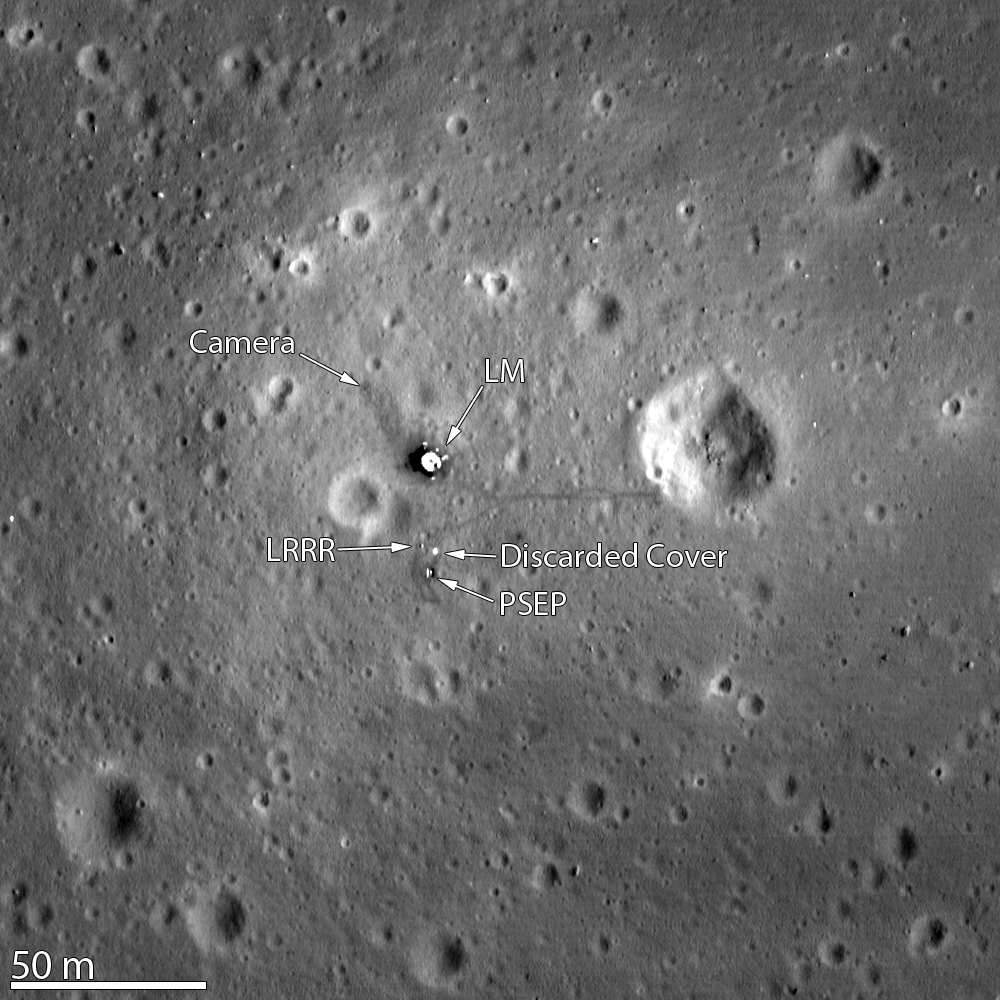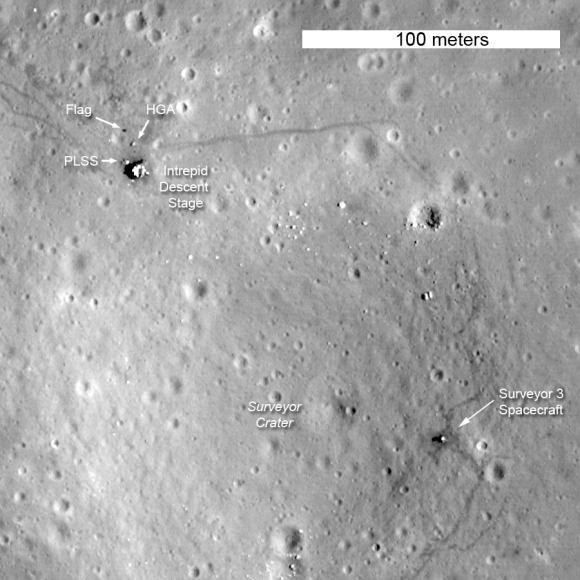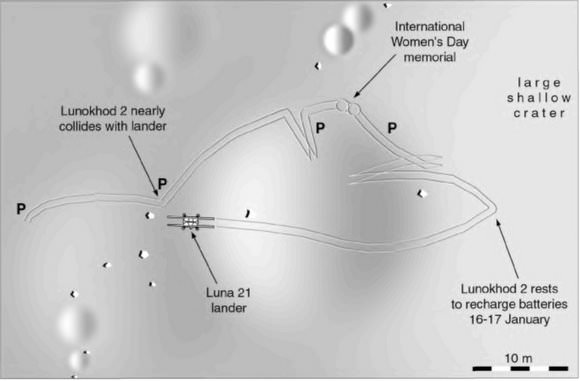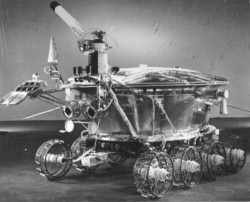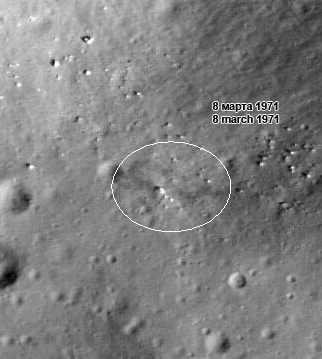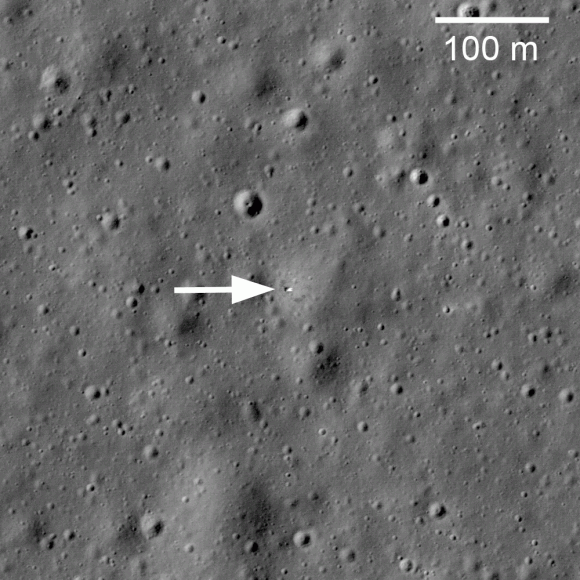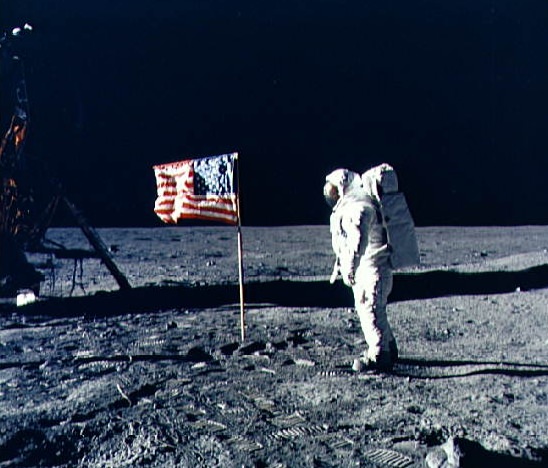Image Caption: On the Lunar Surface – Apollo 11 astronauts trained on Earth to take individual photographs in succession in order to create a series of frames that could be assembled into panoramic images. This frame from fellow astronaut Buzz Aldrin’s panorama of the Apollo 11 landing site is the only good picture of mission commander Neil Armstrong on the lunar surface. Credit: NASA
In memory of Neil Armstrong, First Man to set foot on the Moon, here’s a summary of Apollo 11 highlights and a collection of some tributes and photos to celebrate his life and the indelible inspiration he gave to current generations and all those yet to come to take up the noble torch for science and exploration. He became an everlasting icon for the ages when he took, “one giant leap for mankind”, and accomplished one of the greatest feats in human history.
Armstrong passed away at age 82 on Saturday, August 25, 2012 due to complications from heart bypass surgery.
Neil Armstrong was the commander of the three man crew of Apollo 11, which included Buzz Aldrin and Michael Collins.
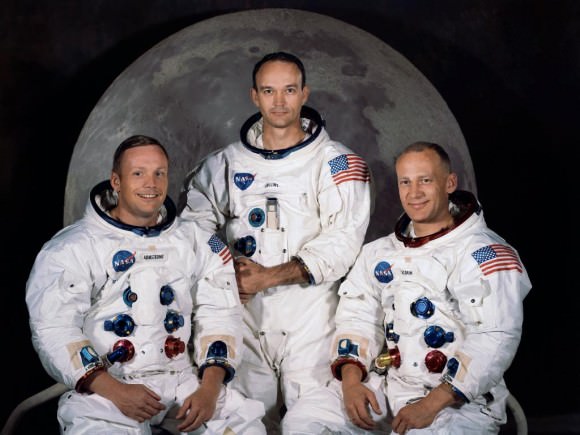
Apollo 11 Crew. The Apollo 11 lunar landing mission crew, pictured from left to right, Neil A. Armstrong, commander; Michael Collins, command module pilot; and Edwin E. Aldrin Jr., lunar module pilot. Credit: NASA
The trio blasted off on their bold, quarter of a million mile moon mission from Cape Canaveral, Florida on July 16, 1969 to fulfill the lunar landing quest set by President John F. Kennedy early in the decade.
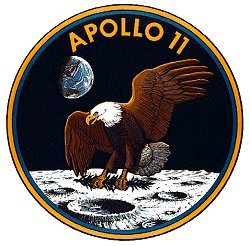
Armstrong and Aldrin safely touched down at the Sea of Tranquility on the lunar surface on July 20, 1969 as hundreds of millions across the globe watched in awe and united in purpose.
“Houston, Tranquility Base here. The Eagle has landed !,” Armstrong called out and emotional applause erupted at Mission Control – “You got a bunch of guys about to turn blue.”
Armstrong carried all of humanity with him when he stepped off the footpad of NASA’s Apollo 11 Lunar Module and became the first representative of the human species to walk on the surface of another celestial body.
His first immortal words,
“That’s one small step for [a] man, one giant leap for mankind.”
During their 2 ½ hours moonwalk Armstrong and Aldrin unveiled a plaque on the side of the lunar module. Armstrong read the words;
“Here men from the planet Earth first set foot upon the moon. July 1969 A.D. We came in peace for all mankind.”
The duo collected about 50 pounds (22 kg) of priceless moon rocks and set out the first science experiments placed by people on another world.
Altogether Armstrong and Aldrin spent about 21 hours on the moon’s surface. Then they said goodbye to the greatest adventure and fired up the LM ascent engine to rejoin Michael Collins circling above in the Apollo 11 Command Module.
Tributes to Armstrong have been pouring in – He is often described as a reluctant hero who gave credit to others.
“Armstrong, the lunar Adam,” wrote Virginia Adams
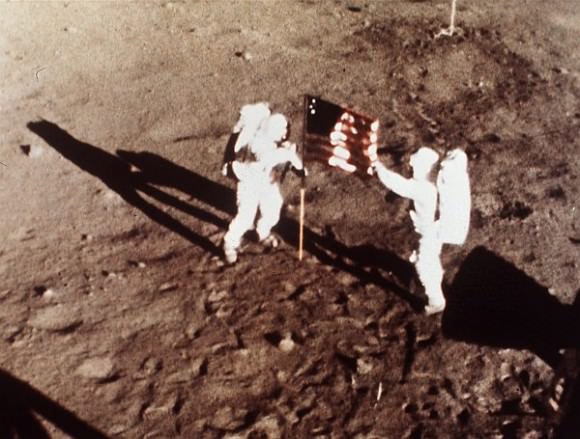
Armstrong and Aldrin plant the US flag on the Lunar Surface, July 1969. Credit: NASA
In a statement, NASA Administrator Charles Bolden said in part,
“As long as there are history books, Neil Armstrong will be included in them, remembered for taking humankind’s first small step on a world beyond our own.
“Besides being one of America’s greatest explorers, Neil carried himself with a grace and humility that was an example to us all. When President Kennedy challenged the nation to send a human to the moon, Neil Armstrong accepted without reservation.
“As we enter this next era of space exploration, we do so standing on the shoulders of Neil Armstrong. We mourn the passing of a friend, fellow astronaut and true American hero.”
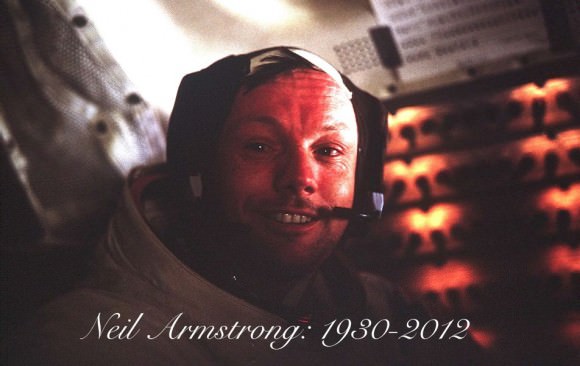
Armstrong’s family released a statement that said in part;
“We are heartbroken to share the news that Neil Armstrong has passed away following complications resulting from cardiovascular procedures.
“Neil was our loving husband, father, grandfather, brother and friend.
“Neil Armstrong was also a reluctant American hero who always believed he was just doing his job. He served his Nation proudly, as a navy fighter pilot, test pilot, and astronaut. He also found success back home in his native Ohio in business and academia, and became a community leader in Cincinnati.
“For those who may ask what they can do to honor Neil, we have a simple request. Honor his example of service, accomplishment and modesty, and the next time you walk outside on a clear night and see the moon smiling down at you, think of Neil Armstrong and give him a wink.”
“He was the best, and I will miss him terribly,” said Michael Collins, Apollo 11 command module pilot.
Buzz Aldrin, Apollo 11 lunar module pilot, released a statement that said in part,
“I am very saddened to learn of the passing of Neil Armstrong today. Neil and I trained together as technical partners but were also good friends who will always be connected through our participation in the Apollo 11 mission. Whenever I look at the moon it reminds me of the moment over four decades ago when I realized that even though we were farther away from earth than two humans had ever been, we were not alone. Virtually the entire world took that memorable journey with us.”
More photos of Neil Armstrong and crew at NASA here
Ken Kremer
![246074main_E60-6286_1600_1024-768[1]](https://www.universetoday.com/wp-content/uploads/2012/08/246074main_E60-6286_1600_1024-7681-580x435.jpg)
Armstrong training on an X-15. Credit: NASA
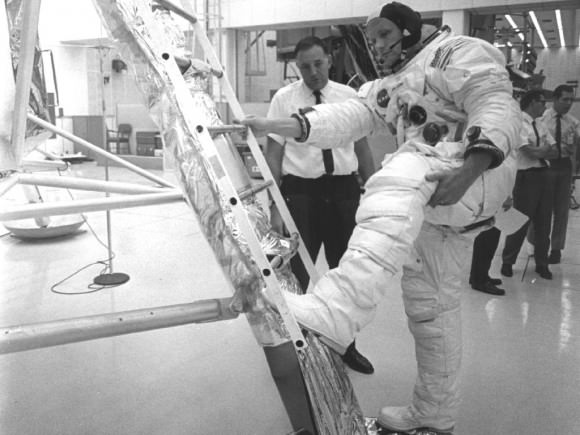
Training for Apollo 11 on the Lunar Module. Credit: NASA
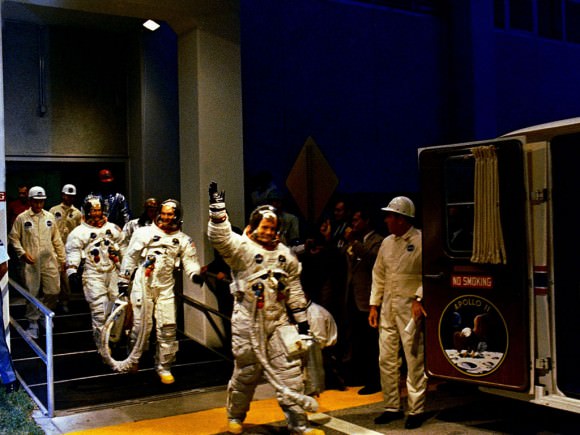
The Apollo 11 crew leaves Kennedy Space Center’s Manned Spacecraft Operations Building during the pre-launch countdown. Mission commander Neil Armstrong, command module pilot Michael Collins, and lunar module pilot Buzz Aldrin prepare to ride the special transport van to Launch Complex 39A where their spacecraft awaited them. Liftoff occurred at 9:32 a.m. EDT, July 16, 1969. Credit: NASA
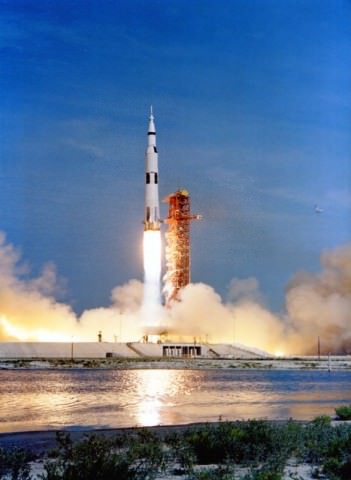
Apollo 11 liftoff from Pad 39 at the Kennedy Space Center on July 16, 1969. Credit: NASA
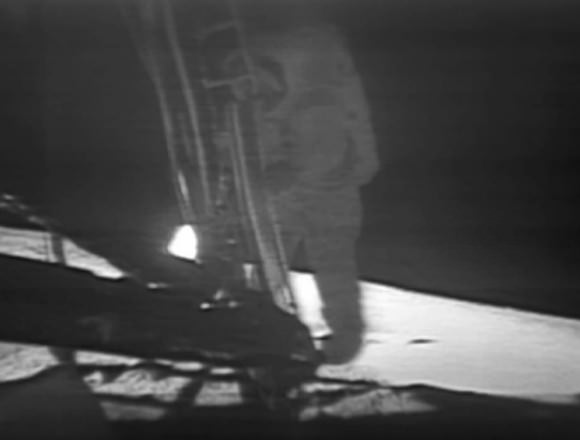
Neil Armstrong about to become the first person to set foot on the lunar surface -TV camera view. Credit: NASA
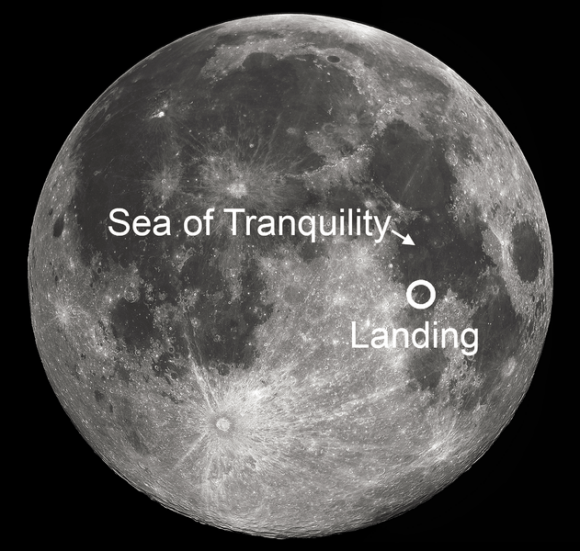
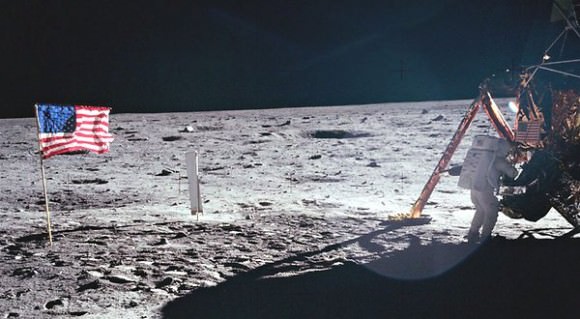




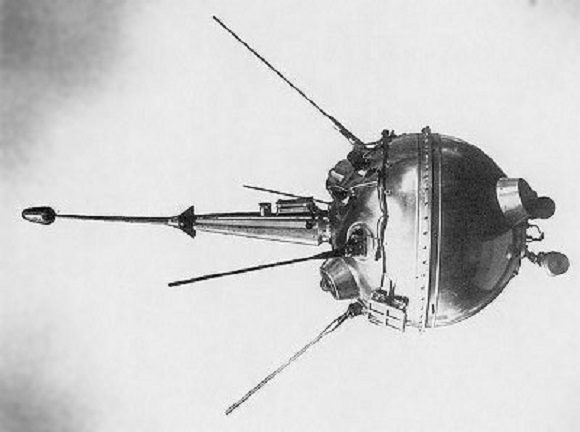
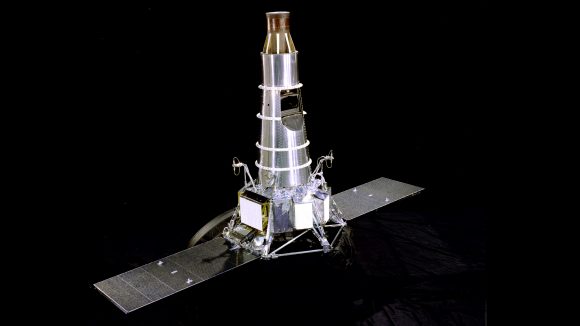
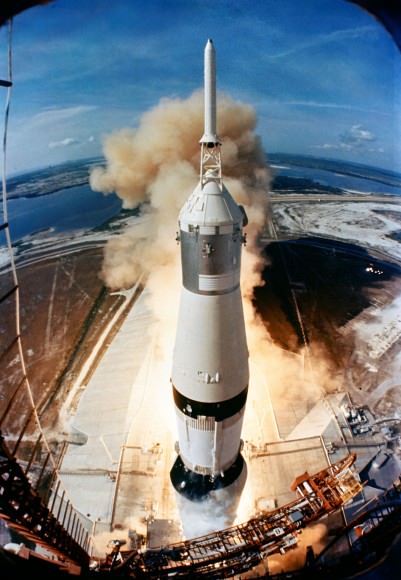
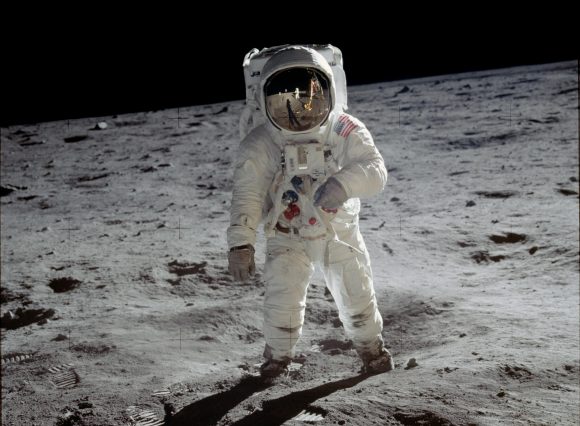

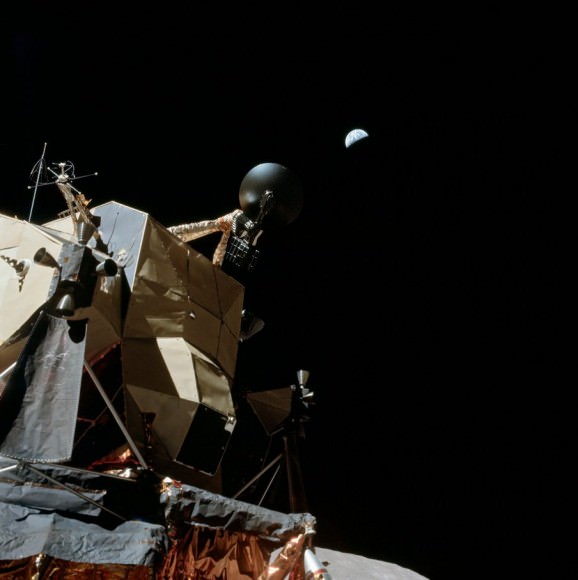
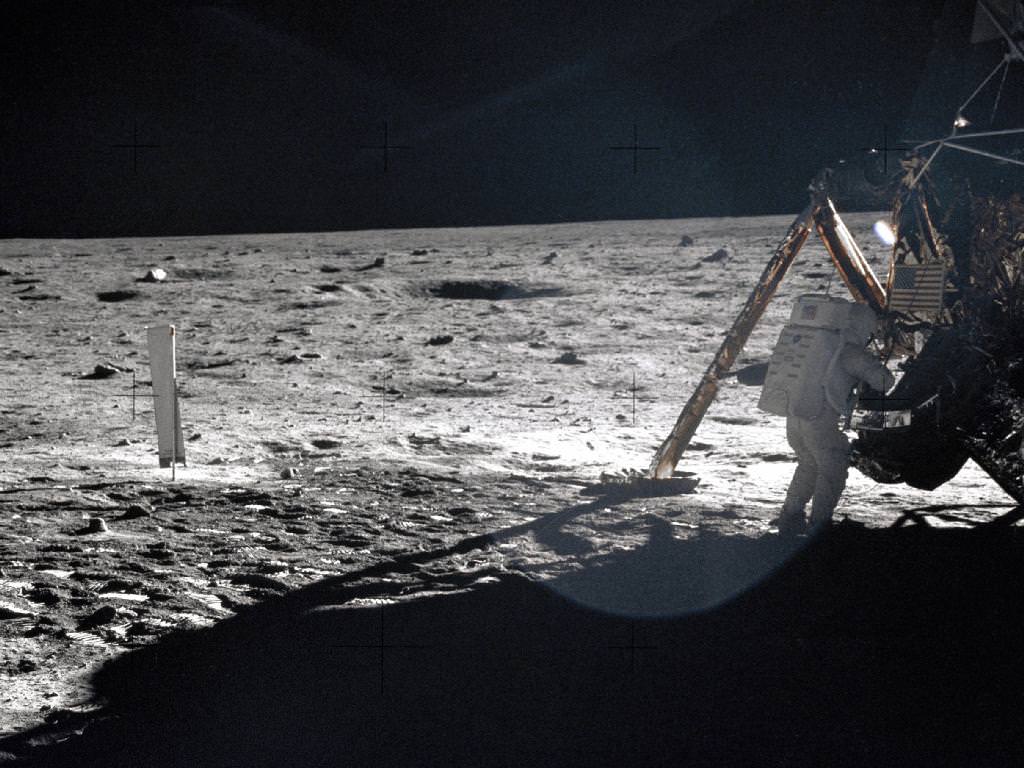




![246074main_E60-6286_1600_1024-768[1]](https://www.universetoday.com/wp-content/uploads/2012/08/246074main_E60-6286_1600_1024-7681-580x435.jpg)






